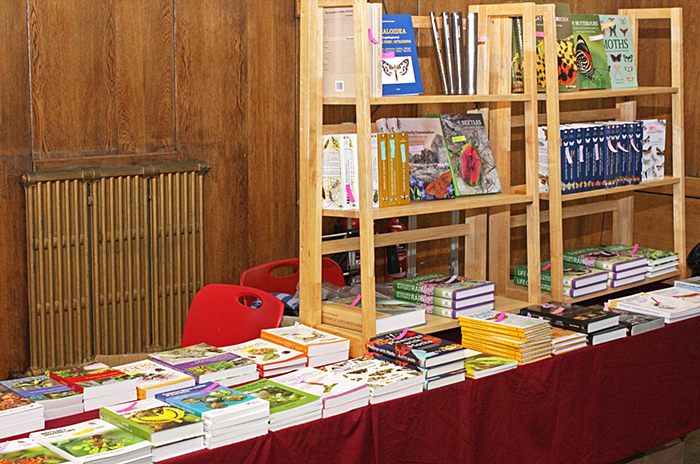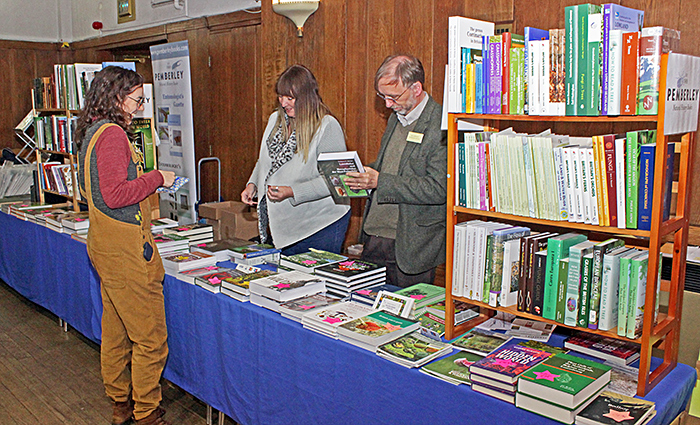BENHS Annual Exhibition
Saturday 4th November 2023
This was the Club’s eighth visit to the Annual Exhibition of the British Entomological and Natural History Society, held in Conway Hall in London. Paul Smith and Alan Wood took their microscopes, slides and specimens to the Club’s stand as part of our microscopy outreach programme, to promote the use of microscopes to a hall full of entomologists.
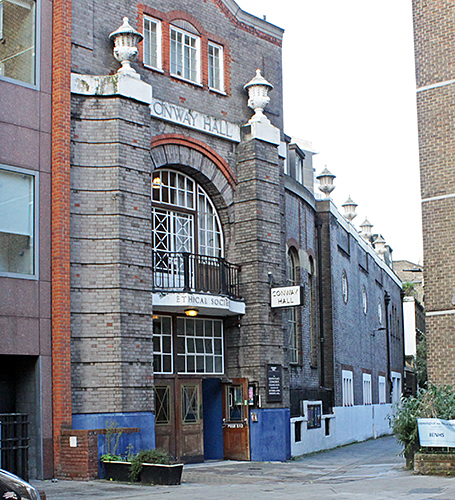 Conway Hall
Conway Hall
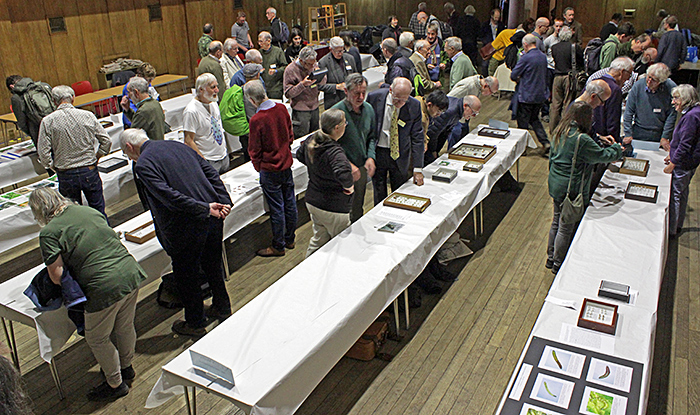 General view
General view
Paul Smith brought his Tomlov DM602 digital microscope. This comes with three interchangeable lenses to provide a wide range of magnifications, and an accessory that provides transmitted light for viewing slides. It can record images and videos on an Micro SD card, or can be connected to a monitor via HDMI or a computer via USB. It can be powered from the mains, or a USB port on a computer, or a phone charger or a powerbank. Paul also brought some arthropods embedded in resin blocks, and some minerals and seeds held in coin capsules.
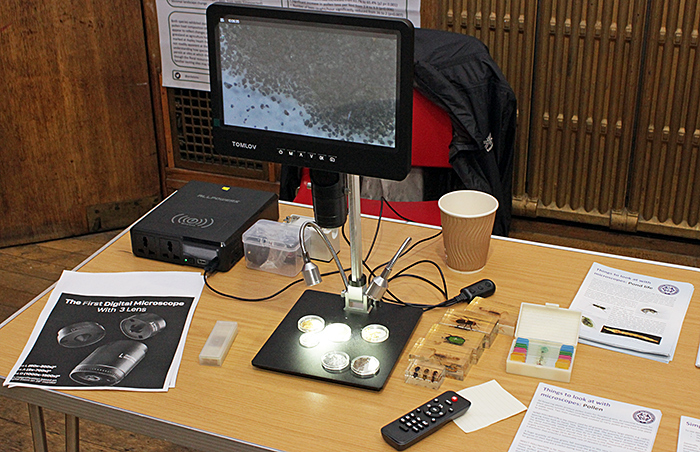 Paul’s digital microscope
Paul’s digital microscope
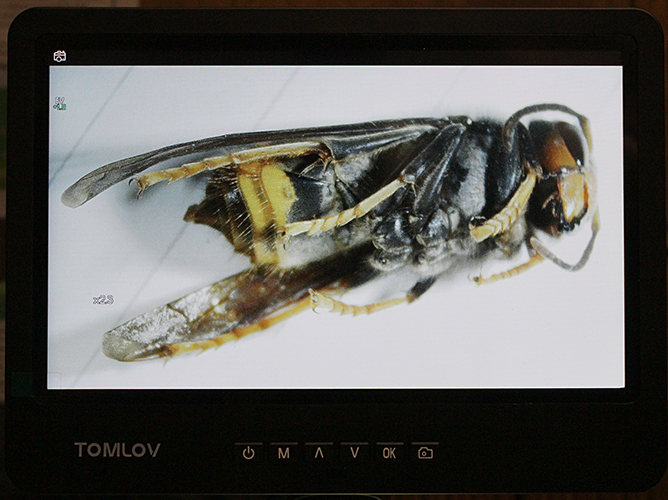 Asian hornet on Tomlov digital microscope
Asian hornet on Tomlov digital microscope
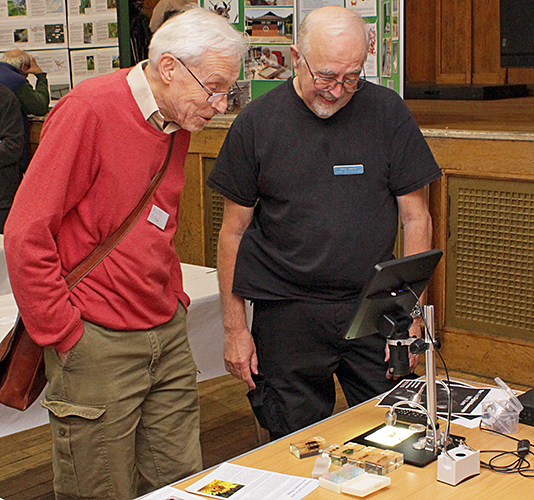 Andy King and Paul Smith (right)
Andy King and Paul Smith (right)
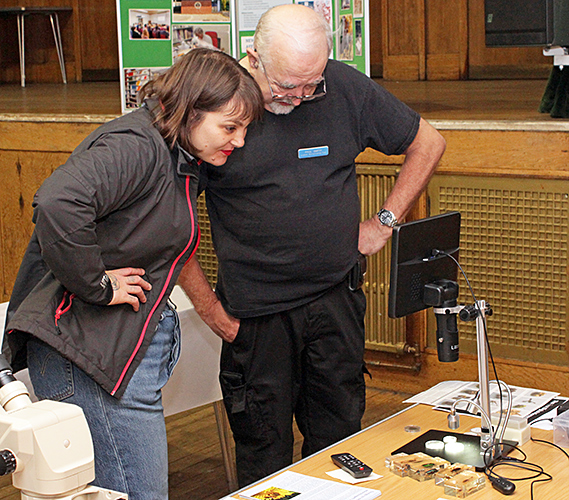 Paul Smith with a visitor
Paul Smith with a visitor
Alan Wood brought his Olympus SZ4045 stereomicroscope, a home-made illuminator that provides shadowless illumination from an LED ring-light, some of his photographs of insects, and set specimens of a honeybee (Apis mellifera), a German wasp (Vespula germanica), a bluebottle (Calliphora vomitoria) and a small iridescent beetle.
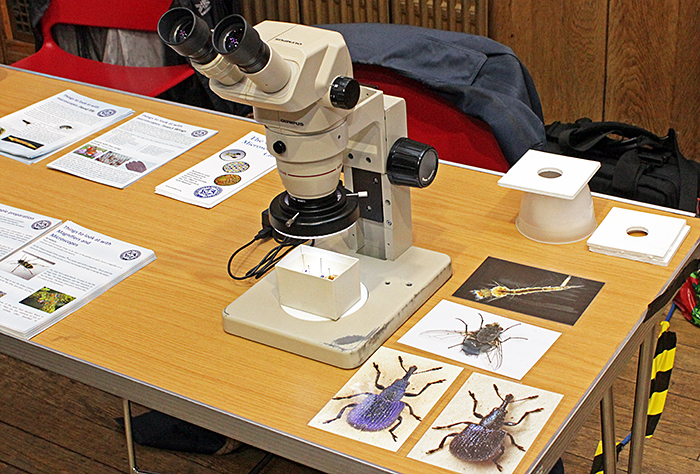 Alan’s stereomicroscope
Alan’s stereomicroscope
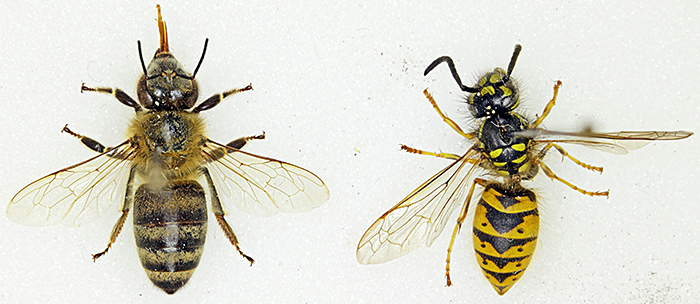 Honeybee and German wasp
Honeybee and German wasp
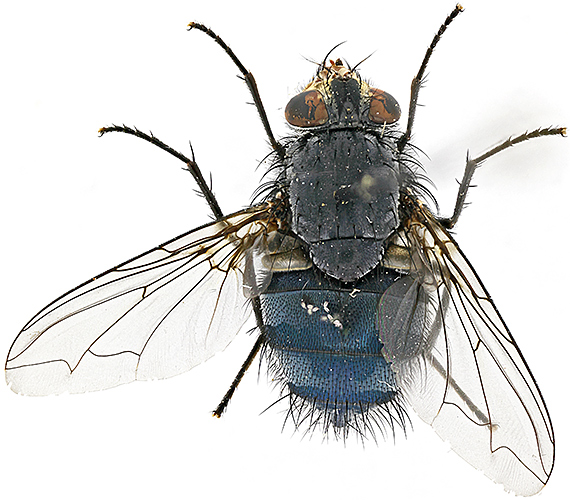 Bluebottle (Calliphora vomitoria)
Bluebottle (Calliphora vomitoria)
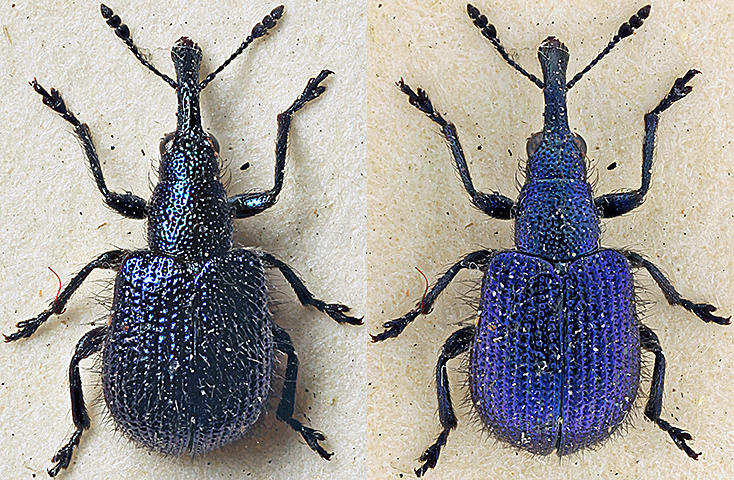 Iridescent beetle lit by a desk lamp and a shadowless illuminator (right)
Iridescent beetle lit by a desk lamp and a shadowless illuminator (right)
John Lock kindly gave us specimens of the Asian hornet (Vespa velutina) (from Brittany) and the European hornet (Vespa crabro).
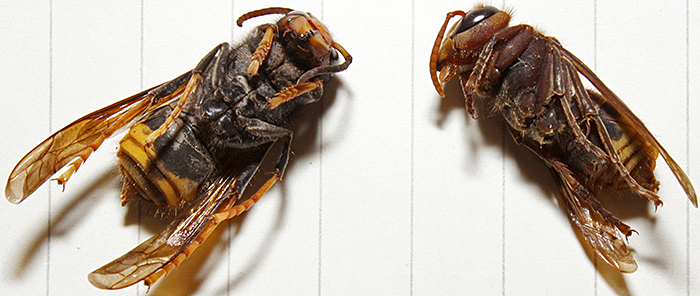 Asian hornet (left) and European hornet
Asian hornet (left) and European hornet
We also had leaflets about the Quekett, and lots of leaflets about things to look at with microscopes that are also available as free PDFs on our Downloads page.
The Exhibition is a leisurely affair, so we had time for some long and interesting chats with visitors about stereomicroscopes, compound microscopes, digital microscopes, LED illuminators, cameras for photomicrography, stacking and stitching.
There were lots of displays by BENHS members of insect specimens and photographs, and a few by groups.
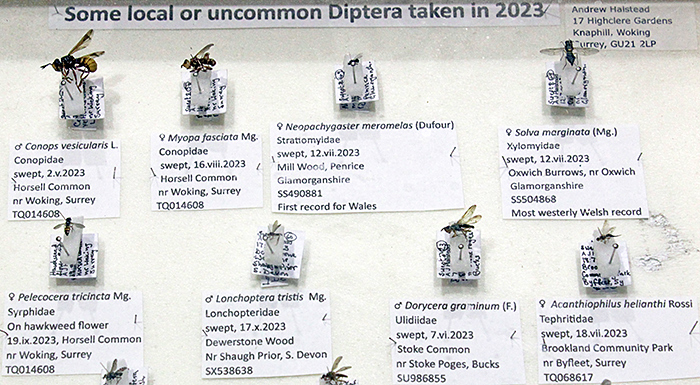 Local and uncommon Diptera
Local and uncommon Diptera
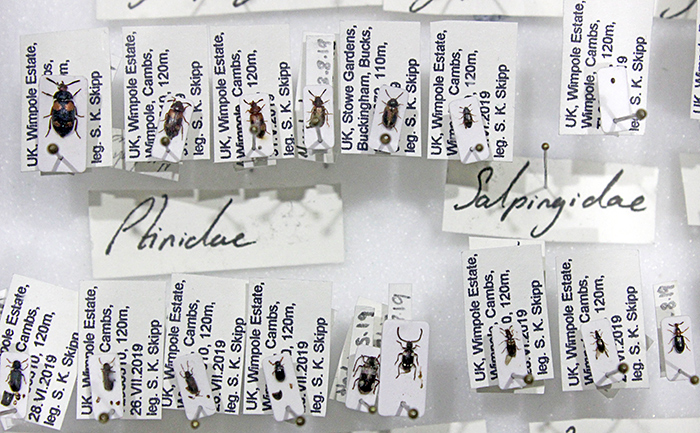 Coleoptera (Ptinidae and Salpingidae)
Coleoptera (Ptinidae and Salpingidae)
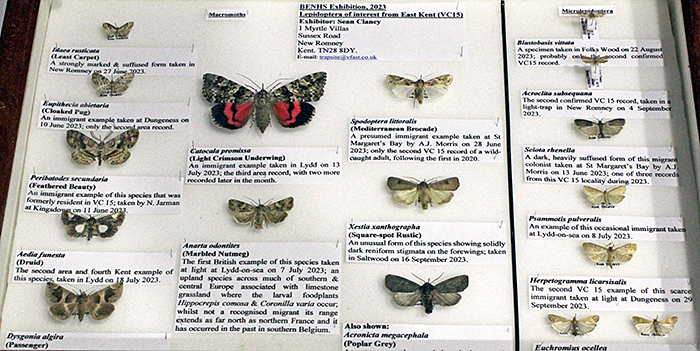 Lepidoptera from East Kent
Lepidoptera from East Kent
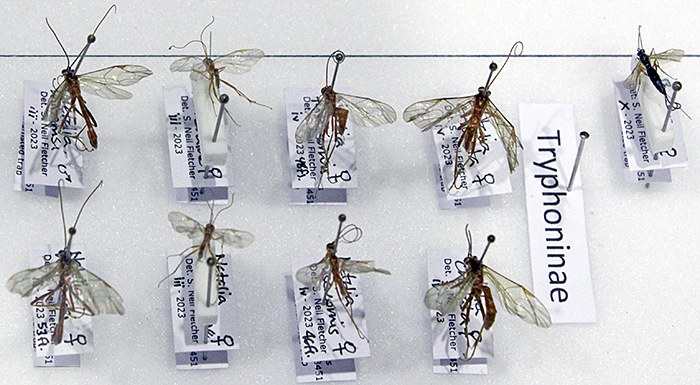 Ichneumonidae (Tryphoninae)
Ichneumonidae (Tryphoninae)
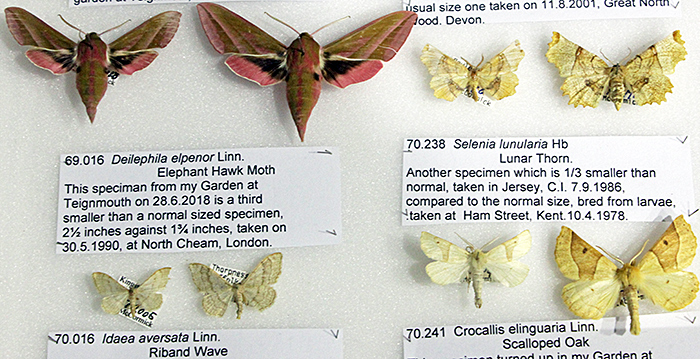 Unusually-small moths
Unusually-small moths
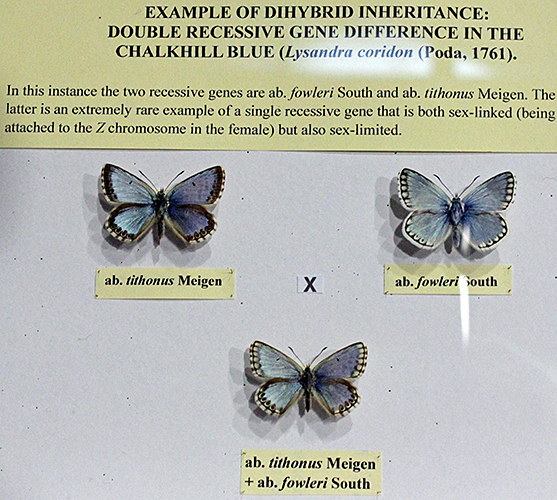 Chalkhill blue (Lysandra coridon) varieties and hybrids
Chalkhill blue (Lysandra coridon) varieties and hybrids
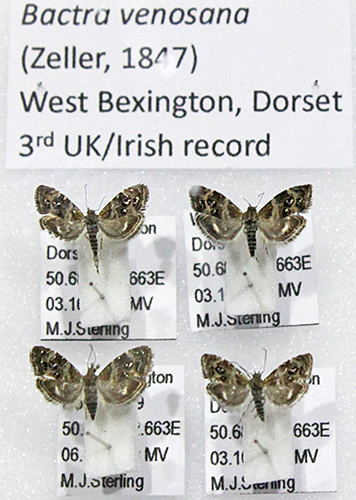 Bactra venosana
Bactra venosana
Some of the more interesting specimens were taken onto the stage to be photographed.
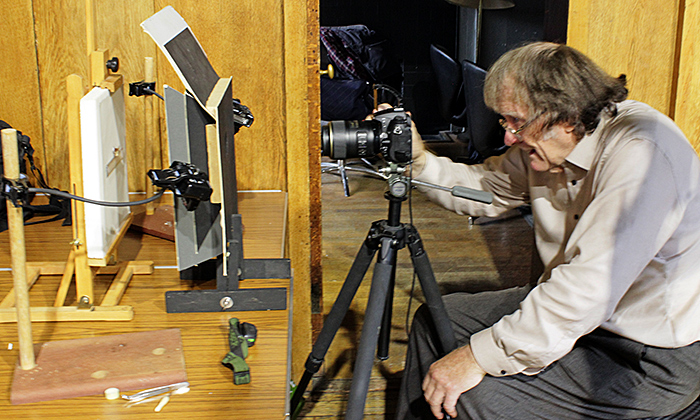 Photographing insects
Photographing insects
BENHS members also displayed some of their own photographs.
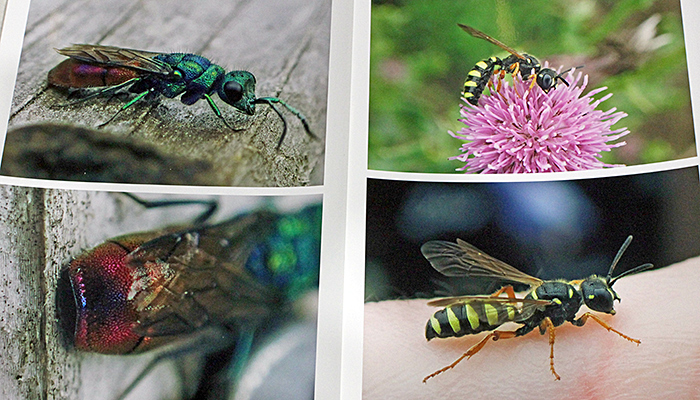 Photographs of insects
Photographs of insects
Andy Murdock has been carrying out a survey of the Green Forest Hoverfly (Caliprobola speciosa) in the New Forest, and he showed a presentation and some leaflets. In 2022 he found only one specimen, but this year he found around 100.
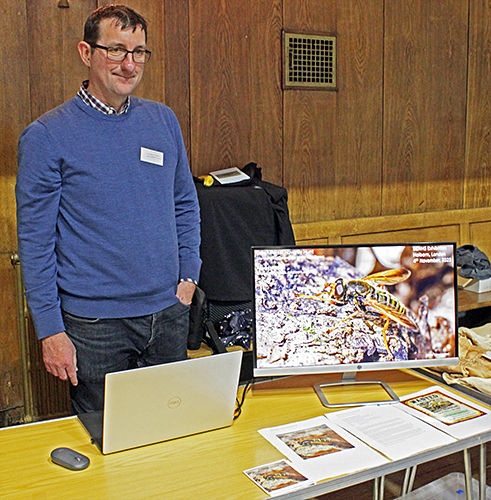 Andy Murdock
Andy Murdock
John Lock had a display related to the Asian hornet (Vespa velutina), including specimens of the Asian hornet (from Brittany) and the European hornet (Vespa crabro).
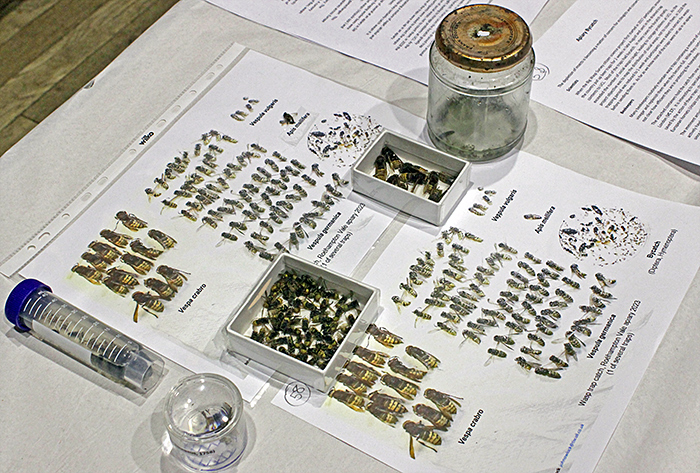 John Lock’s exhibit
John Lock’s exhibit
We are normally the only stand with microscopes, but this year BWARS (the Bees, Wasps & Ants Recording Society) had two stereomicroscopes and lots of specimens in small cardboard boxes.
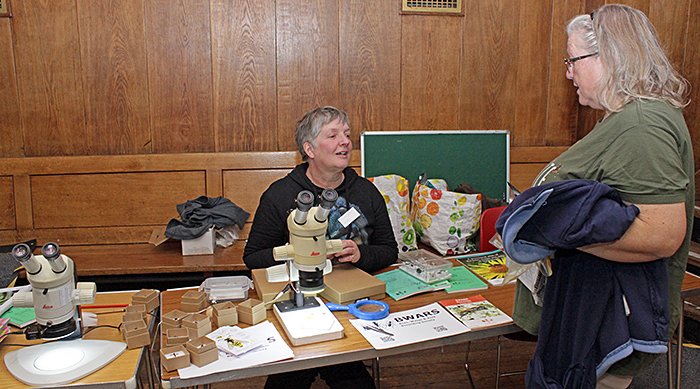 Bees, Wasps & Ants Recording Society
Bees, Wasps & Ants Recording Society
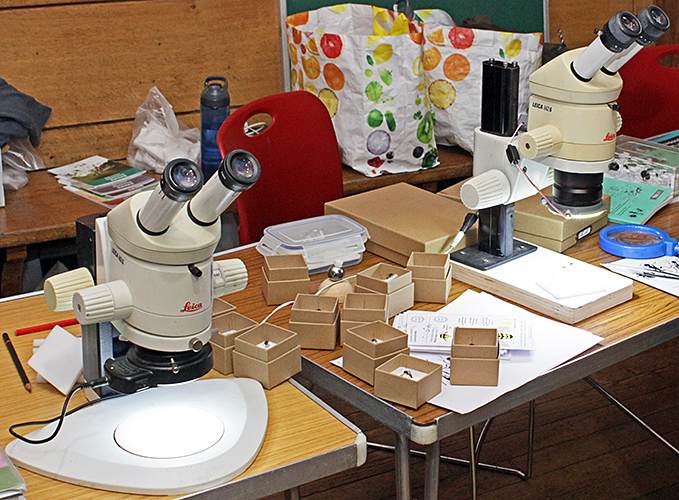 Leica MZ6 stereomicroscopes
Leica MZ6 stereomicroscopes
Richard Dawson sells accessories that he makes on the ArthroPods website and on eBay. They include a holder for examining pinned specimens under a stereomicroscope, glass tubes with Plastazote stoppers for restricting the movement of live insects and pan traps.
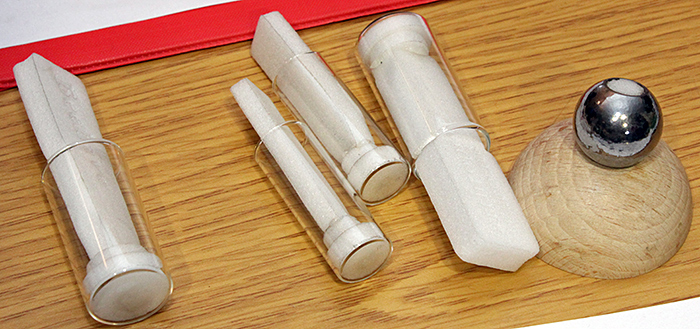 ArthroPods accessories
ArthroPods accessories
In addition to stands by BENHS members, there were two stands selling books (many at reduced prices) and one stand promoting inks derived from galls caused by insects.
London Pigment sells some unusual inks, including 12 gallotannin ones made from plant galls that are caused by insects. They were showing some of the galls, tubes of the inks, and paper with the inks applied.
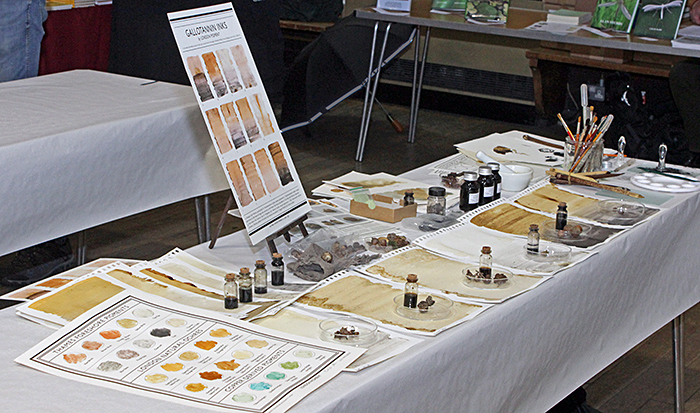 London Pigment stand
London Pigment stand
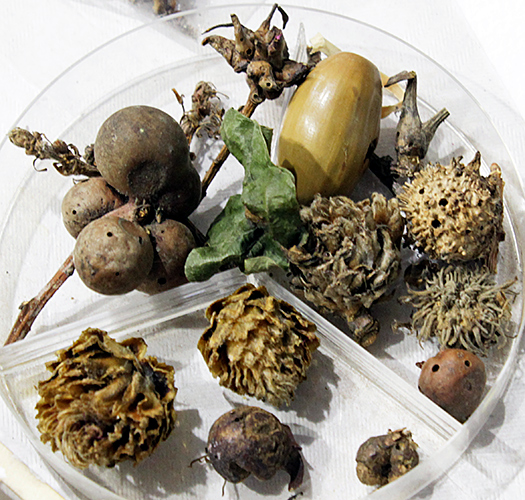 Plant galls
Plant galls
Marble galls (caused by Andricus kollari) are a familiar sight on oak trees, but the wasp species is not native; it was introduced in the 19th century so that the galls could be used as a source of tannin.
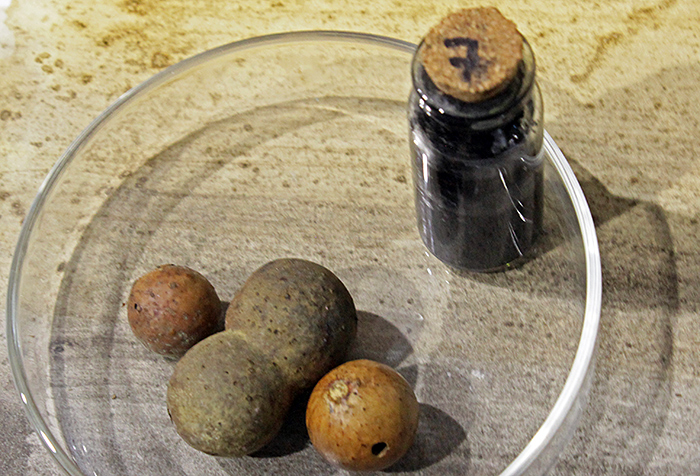 Oak marble galls and ink
Oak marble galls and ink
Report and photographs by Alan Wood


